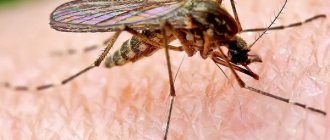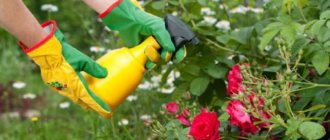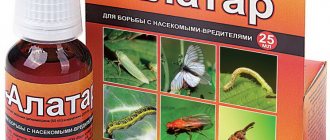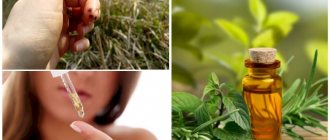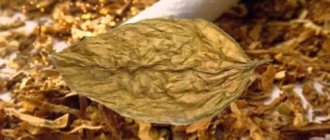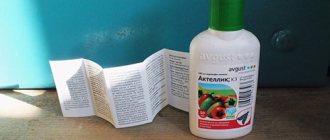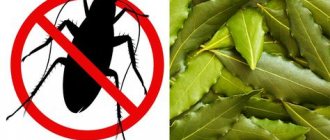When laying out a garden, we imagine how beautifully the trees will grow, and how their branches will bend under the weight of the fruit. In practice, it may happen that some kind of disease or pest attacks our trees, and dreams of high yields burst like a soap bubble. We present an abbreviated alphabet of pests and diseases of apple trees - descriptions with photographs, methods of treatment and prevention.
When growing apple trees, prevention is necessary, which significantly limits the occurrence of certain diseases and pest attacks.
Signs of parasites on trees and seedlings
Pests eat different parts of the plant: buds, bark, flowers and leaves. The apple tree is susceptible to beetles, caterpillars, and moths. You should know the signs of damage to this fruit crop:
- If the leaves turn pale and then curl, the tree has been attacked by moth caterpillars.
- The invasion of scale insects ends with the falling of leaves and disruption of plant growth.
- If red tubercles form on the surface of the leaf blade, the tree is being attacked by galls.
- The codling moth lays eggs on the leaves, disrupting photosynthesis.
- The progression of the pear mite leads to curling of the leaf plates (seedlings are most often affected). The insect infects trees before the ovaries form. It lives on the bark, leaving a gray coating.
- The codling moth causes great damage to the crop. When she attacks the defenseless apple tree, the green fruits fall to the ground. The codling moth feeds on stems, leaves, bark and seeds.
Pests should be managed comprehensively because they spread quickly. Parasites carry bacterial and fungal diseases.
Use of catch belts
One of the effective methods of pest control is trapping belts. Their operating principle is based on trapping insects.
The main types of such devices:
- Funnel-shaped. Thick paper or cardboard is wrapped around the lower part of the trunk so that a socket is formed at the bottom, and the upper part of the belt is adjacent to the wood. The structure is attached by wrapping it with thread, tape or wire. The gaps are covered with clay or garden pitch.
- Double-sided funnel. They do the same, but leave the sockets on both sides.
- Glue. The material is tied to the trunk and then lubricated with long-drying glue. Typically, adhesive compounds against rodents or insects are used.
The height of the belt placement varies within 0.5–1 m from the ground. The optimal belt width is 25 cm. It is important that the fishing device does not touch the crown.
Adhesive belts are checked daily. Insects caught in traps are destroyed.
Attention! The disadvantage of trapping belts is that they also trap beneficial insects.
A trapping belt is an effective means of preventing pests and does not harm pets or the environment. It is allowed to be used even during harvest.
Sucking pests on apple trees
To protect the tree from such pests, you need to inspect the crown. Prevention involves timely removal of dry branches and leaves. Sanitary pruning is best done in spring or autumn.
Green aphid
It is better to get rid of it before fruit sets. Aphids reproduce quickly and move from one plant to another. She loves young apple trees. The insect infests leaves and branches, leaving a sticky substance that attracts ants.
The parasite disrupts the photosynthesis of the plant, and subsequently the shoots die.
If the leaves curl and turn black, the tree has been attacked by aphids. Sometimes the insect leaves red raised spots on the surface of the leaf plates. The parasite lives inside the buds. It harms fruit crops and sometimes infects them with diseases. To remove aphids you need to use a solution of the drug Aktara. The product is quickly absorbed and is safe for humans.
Green aphid on an apple tree.
Some gardeners use it to fight ants. The drug Iskra can be used against aphids; it is better to use it during the growing season. Spark is available in the form of easily soluble tablets (1 piece is designed for 10 liters of water). Manufacturers recommend applying the drug once every 30 days.
Fruit mites
They can be seen under a microscope. The insects look like a bright red coating. Pests lay eggs on the leaf blade, disrupting the photosynthesis of the tree. They feed on cell sap and cause tubercles to appear at the bottom of the leaves.
To protect the fruit crop from insects, you should spray it after the ovaries stop forming. It is recommended to use one of the following drugs:
- Fufanon;
- Kemifos;
- Actellik.
These agents have an inhibitory effect on the tick. If insects attack in large numbers, you will need to apply the product again after 2 weeks.
The insect is a fruit mite.
California scale insect
It harms large fruit plants. The small insect has the appearance of a white coating and multiplies quickly, laying eggs on different parts of the tree. As a result, the leaves turn yellow, brown scales appear on their surface, and the bark loses its characteristic shine.
The invasion of scale insects leads to swelling of the trunk, the leaves become sticky and begin to stick to each other.
The scale insect lays larvae in the summer. To prevent the pest, it is necessary to thin out the crown and promptly remove moss and dry leaves. In the fight against insects, solutions of the drugs Avertin, Nemabact or Aversectin should be used.
Californian scale insect on an apple tree.
Apple sucker
The psyllid is a small insect with a green body and light green wings. It attacks the tree before buds open in the spring. First, larvae appear, infecting leaves and peduncles. Small pests feed on the sap of leaf blades. When flowering ends, full-fledged individuals hatch, and later they move to weeds.
It is recommended to destroy insects before the buds open. You should use an infusion of yarrow or a soap solution. It is advisable to destroy psyllids with wings using tobacco waste. You need to take 1.5 kg of tobacco dust and apply it to the surface of the plant. As a last resort, you should use the drug Fas.
The insect is the apple honeydew.
Common problems
Powdery mildew is detected by the appearance of a white coating on the leaves, branches and trunk.
Scab . When these parasites appear on the leaves, flowers and stalks of apple trees, a brown coating forms. The parasite can infect both adult and young apple trees.
Bacterial cancer . The name of this disease alone is worth it! Indeed, it is very dangerous, and is manifested by the appearance of black rot on the leaves and cracks in the bark. Apple trees often die from this disease.
Aphids most often attack young leaves and branches, settling on them in entire colonies.
The red mite overwinters in the bark, and with the onset of spring it actively reproduces. Over the summer, five or even six generations of the parasite can change. The red mite feeds on the sap of apple trees, sucking it out of the leaves.
Medyanitsa . This parasite is very insidious, and it feeds on kidneys. The copperhead lays its larvae inside flowers, which provide food for these larvae. It is clear that such a flower will not have an ovary.
The codling moth creates cocoons on apple trees and lays its eggs directly on the fruits. Codling moth larvae eat the inside of apple pulp.
Gnawing pests of fruit trees
They feed on bark, fruits and leaves. Such insects do not cause disease, but often lead to crop loss.
Butterflies and moths
The winter moth is a small black and white butterfly (moth). Males have developed wings, thanks to which they fly. Females cannot fly because their wings are short. The maximum body size of an adult is 1 cm. The winter moth attacks a fruit tree in mid-September. The insect often affects:
- pear;
- cherry;
- cherries;
- plum
It lives on branches and loves to feast on young buds.
Butterflies and moths on an apple tree.
Beetles and caterpillars
Fruit crops are affected by the apple flower beetle (an insect with a black-brown body). It can attack pear and hawthorn. A representative of the weevil family has a small gray or brown body measuring 4 mm with characteristic stripes on the surface.
It feeds on buds. If it attacks in large numbers, the gardener loses his harvest. The pest often hides in the soil. The weevil comes out in the spring when the buds open. In mid-March, as soon as the temperature reaches +7°C, you need to go out into the garden and inspect all the fruit trees.
If the buds become wet in dry weather, you need to start fighting the weevil. When the air temperature reaches +9°C, pests attack trees en masse, eating the buds. They make holes in these parts of the plant from which liquid flows out.
To prevent weevils, you need to remove dead bark in early March. It is advisable to dispose (burn) it away from the garden plot. In the spring, you can lay burlap or corrugated paper under the tree, pre-impregnated with Karbofos. After flowering, such a trap must be removed and burned.
Insects - pests of the apple tree - can lead to its death.
The life of the tree is threatened by the bark beetle. Its body is large (up to 3.8 cm), glossy. This beetle feeds on bark. The larvae develop into adults when they reach the age of 1 month. The bark beetle makes small holes in wood.
Its relative, rugose sapwood, has a bluish body with characteristic wrinkles. He leads the same lifestyle, but causes less harm to the apple tree. To ensure the prevention of beetles, it is necessary to follow the rules of agricultural technology: remove weeds and dry leaves in a timely manner, whitewash trees, apply appropriate preparations.
You can attract birds, they will help fight the beetles. If the bark comes off easily and there are many holes on its surface, the tree will not be able to be saved. In other cases, you need to apply one of the following products:
- Empire-20;
- Calypso;
- Confidor;
You should pour the prepared solution into the holes left by the beetles. You need to do the procedure 3 times, and then treat the bark with garden varnish. If the damage is extensive, you need to cut down the tree and remove the stump, and then dispose of it away from the garden bed.
Beetles and caterpillars are pests of apple trees.
Green caterpillars are often found on apple trees. They eat flowers, buds and leaves and hide in the bark. After flowering completes, the pests go into the soil to a depth of 10 cm. If they attack in large numbers, the fruit crop is severely affected.
To control insects, fabric traps should be placed on trees at the end of winter. Thanks to them, the caterpillars will not get into the crown. Afterwards you will need to apply a Chlorophos solution. Prevention consists of regularly removing moss and whitewashing the trunk.
Snails and slugs
Snails are useful because they process plant debris and help fight weeds. Slugs perform a sanitary function. To protect the apple tree from their invasion, it is necessary to comply with agrotechnical requirements: carry out gardening work in a timely manner, attract birds, and place plants correctly in the garden bed. But, if snails attack en masse, you should place bait - containers filled with beer.
Insects – snails and slugs.
Insects will come to the attractive smell, after which you will need to collect them manually. Garlic infusion should be used to repel pests. To prepare it, you need to take 100 g of chopped garlic and put it in 3 liters of water. The product will be ready in 20 hours; you will need to add another 1.5 liters of water and apply the infusion to the tree using a spray bottle.
Folk recipes
Folk remedies are prepared from ingredients that can be found at home or in the garden. They are safe for people and animals and are approved for use during the fruiting period.
Homemade preparations are effective as prevention and control if the lesion is small. Such products work especially well against sucking pests.
However, the effectiveness of such substances against some pests is low. The preparations are washed off with water, so re-treatment is carried out after each precipitation. They do not act as quickly as chemicals.
Recipes for folk remedies:
- Decoction of onion peels. Fill the pan 1/3 full with onion skins, and fill the rest with water. Bring the product to a boil, turn it off and let it brew for 2 days. Strain and dilute with an equal amount of water.
- A decoction of bitter herbs: dandelion, wormwood, yarrow, nettle. Fill the pan halfway with herbs, fill the rest with water. Boil the herbs for half an hour, then dilute with 2 parts of water.
- Onions with garlic. Grind 300 g of onion and 200 g of garlic in a meat grinder. Add gruel and peels from peeled vegetables to 10 liters of water. Leave for 2 days, strain. Use for spraying trees.
Spring-summer pest protection measures
Preventive procedures should begin in the spring, when the air temperature rises to +4°C. It is recommended to apply insecticides in dry, windless weather. It is advisable to perform the first treatment before the buds open. The second time the drugs should be applied during swelling of the kidneys.
The third treatment must be performed before the pink bud appears, and the fourth – when the ovaries reach the size of a pea. Do not apply the product in sunny weather as it will not work or will cause burns. Experienced summer residents advise spraying the apple tree in calm weather.
Preparations for spraying
It is not advisable to use chemical compounds after rain. It is better to apply the drugs from 6 to 8 am, while there is no scorching sun. Treatments can be performed in the evening after sunset. To enhance the effect, apply copper sulfate or Bordeaux mixture to the sections. In spring it is useful to treat the tree with one of the following preparations:
- Bordeaux mixture. It is better to apply a three percent solution before the buds open. At the pink bud stage, a one percent composition should be used.
Bordeaux mixture protects the apple tree from insects. - Home. The product contains copper chloride. It protects the apple tree not only from pests, but also from a disease called spotting.
- Ordan. The drug also contains copper oxychloride. It is used to prevent various pests and diseases.
To increase the immunity of the apple tree, copper-containing preparations should be applied in the spring. They will not cause harm, since the fruiting stage is still far away. In March, you can spray the tree with Aktara, Iskra, Calypso or Karate.
Folk remedies
To make the solutions stick better, you need to add a small amount of crushed soap to them. Before the leaves begin to bloom, you will need to apply the following composition. Take a handful of chopped garlic, nut leaves and onion peels, pour in 1.5 liters of water, then add a handful of tobacco.
The product should infuse for 8 days. After this time, you will need to dilute it with water in an amount of 11 liters and apply it to the apple tree with a spray bottle. This composition repels pests that damage the buds.
In the phase of young leaves, the same solution should be applied with the addition of 20 g of yarrow or wormwood. It will help in the fight against green and black aphids. It is recommended to spray onto the crown.
If the tree has already been attacked by aphids, a solution based on tomato tops should be applied. To prepare, you will need to take 3.5 kg of fresh raw materials, place it in a large container and add 9 liters of water.
The mixture should sit for 1 hour, after which it will need to be boiled for 40 minutes. The broth will need to be filtered, add 5 liters of water and a handful of laundry soap.
Tomato tops solution.
In the fight against caterpillars, thrips and aphids, you should use a composition based on black pepper. You need to take 0.5 kg of spice, grind it, add 2 liters of water and let it brew for 10 days. After this, the infusion should be diluted with 11 liters of water.
Chemicals
Scientists have created a lot of chemicals to protect plants from diseases and pests. They act much faster than biologically active drugs, but if used incorrectly they can lead to negative consequences. Dosage in this matter is of paramount importance.
However, the use of chemical protection products in the spring does not entail any danger. Apple trees do not absorb these drugs because the movement of juice has not begun. Do the processing in such a way that by the time the juice begins to flow, the chemicals will completely disappear.
Urea (carbamide) successfully copes with aphids, leaf rollers, copperheads, and pathogens of fungal diseases. In addition, urea enriches the soil under apple trees with nitrogen. If you add a little copper sulfate to the urea solution, the effect will be more significant. Such spraying helps to delay the flowering of apple trees, thereby protecting them from spring frosts.
For 10 liters of water you need to take 50 g of copper sulfate crystals and 700 g of urea, stir well until the sediment disappears. It is advisable to use such a product at the first stage of processing apple trees. The solution can cure apple trees from scab and fruit rot, curl, phyllosticosis and even bacterial cancer.
Copper sulfate solution . In 10 liters of water you need to dissolve 100 g of copper sulfate crystals. But know that copper sulfate is part of the Bordeaux mixture.
You can treat apple trees with products containing copper only once a year.
Iron sulfate has a universal effect. With its use, it is possible to rid apple trees of harmful insects, fungal diseases and prevent the occurrence of chlorosis. It can only be used in early spring before the apple trees begin to budding. The solution is prepared at the rate of 500 g of iron sulfate per 10 liters of water.
Skor is used to treat apple trees from curl, scab, gray rot and powdery mildew. The product begins to act within 2 hours after application. Its disadvantage is that parasites and pathogens adapt to it. The drug can be used only once for each apple tree. The solution is prepared by adding 2 ml of the drug to 8 liters of water. The solution can only be used at an ambient temperature of 14 to 25 degrees.
Bi-58 is effective for killing scale insects, mites, leaf rollers, aphids, moths and caterpillars. To prepare the solution, 10 ml of the drug per 10 liters of water is required.
The drug Bi-58 is lethal to bees. Do not use it when gardens are in flower.
When working with chemical protective agents, be sure to use safety glasses, rubber gloves and work clothing.
Autumn-winter pest control work
To protect the apple tree in winter, slaked lime with the addition of a clay solution should be applied to the surface of the trunks. To enhance the effect, it is recommended to add a small amount of copper sulfate or insecticide.
To protect fruit crops in winter and early spring, you need to wrap them with adhesive cloth.
Pests fall on it after hibernation and are collected manually. During temperature changes, the bark cracks. To avoid this problem, in the fall you should cover the tree with roofing felt or burlap.
Fruit crops often suffer from mice, which make holes in the trunks. If the wounds become infected, the apple tree begins to hurt. Mice and rats are poisoned in the fall. Gardeners make baits in which they place sunflower seeds mixed with poison. The traps are covered with plastic containers.
Chemical compositions
To protect the fruit tree, various chemicals are used:
- Sunmite. The drug is effective in the fight against ticks and whiteflies.
- Nisaran, Borneo. The product is an alternative to Nitrafen and is used to kill various insects and larvae.
- Stirrup. The chemical is used to eliminate spider mites.
- Aktara. The drug is used to kill green and black aphids.
A drug for killing aphids - Aktara.
Biological products
Such products can be used at any time of the year. Unlike conventional insecticides, they are safer for humans. The preparations are applied during the growing season and after harvesting. Biological insecticides contain microflora that penetrate the insect’s body and cause destructive processes in it. Today the following biological products are in demand:
- Fitoverm;
- Bicol;
- Aktofit.
Actofit is a pest repellent.
Unlike classical insecticides, the drugs are combined with each other, but they should be applied strictly following the instructions.
Selection of drug for treatment
There are 3 main types of drugs that are sold on the gardening market and in stores: fungicides, insecticides and biological agents.
Fungicides and insecticides
Fungicides are chemicals that are primarily used to prevent and treat diseases. Some drugs can also affect pests.
Insecticides are chemicals that help control harmful insects.
Fungicides and insecticides are actively used when growing apples for sale, but private gardeners and summer residents are trying to reduce the number of chemical treatments.
However, this does not always work out, because such funds have significant advantages:
- fast action;
- duration of action of one treatment;
- decomposition of all harmful compounds within a certain period of time;
- good solubility in water.
Most of these products are not washed off with water. It is enough to apply them no earlier than 4–8 hours before precipitation. During this time they will be absorbed and will act for several weeks.
But chemicals have serious disadvantages:
- Over time, pests get used to the drug, so the products have to be constantly changed.
- Chemicals are harmful to the environment, many of them are dangerous to animals and bees. If you eat an apple that has recently been sprayed with the drug, you can get poisoned, because the harmful compounds have not yet had time to decompose.
- If the dosage indicated on the package is not followed, there is a risk of harming the plant.
Chemicals are either contact or systemic. The former instantly kill pests upon contact with them. Systemic drugs are absorbed into plant tissue, and until they decompose, the plant remains dangerous to insects.
Attention! Chemicals decompose on average in 15 days. This is important to consider when choosing processing times.
Pest treatment products:
- "Fufanon";
- "Alatar";
- "Aktellik";
- "Karate";
- "Karbofos".
There are other drugs available to control insects. The list shows the most popular ones.
This is interesting:
A step-by-step guide for beginner gardeners: how to plant an apple tree in spring
Fertilizing the garden correctly: how to feed an apple tree in July for a good harvest
Step-by-step guide to planting a closed-root apple tree in summer
Biological agents
Biological preparations are safer than chemicals, do not harm the environment, and are not toxic to humans. Despite this, spraying them later than 2 weeks before harvesting is also not recommended.
The action of biological agents is based on the work of microorganisms, which, when they come into contact with pests, destroy them.
Biological products include:
- "Fitoverm";
- "Lepidocide";
- "Bitoxibacillin."
There are pest control methods that do not involve spraying. Thus, insects that destroy pests help: ladybugs (feed on aphids), some types of mites, etc.
General protective measures
Chemical compounds against pests are applied before or after flowering. After 15 days it is recommended to spray them again. Complex products, such as Fitoferm, provide prevention of moniliosis disease and suppress harmful insects.
Iron sulfate is used to prevent scab. It is applied before the buds bloom on the tree. It is forbidden to spray this product after bud break, as it causes burns on the leaves. To protect apple trees from pests (mites and leaf rollers), Karbofos is used.
The life of the tree is threatened by tinder fungi, which often appear in the trunk.
If mushrooms form in the lower part of the trunk, the tree dies. In this case, it is cut down and burned far from the beds. Polypores that appear on branches are less dangerous. They are cut off and the apple tree is treated with iron sulfate.
To prevent tinder fungus, use a 5% solution of iron sulfate. Ants should be controlled because they feed on the buds and cause aphids to appear. To prevent insects from crawling along the trunk so often, you need to lubricate it with tar.
Before dealing with apple tree pests, you need to clear the area of dry branches and weeds. Chemicals should only be used in accordance with the instructions.
Preventive measures
Prevention measures are closely intertwined with agrotechnical methods. To prevent the appearance of pests, you need to promptly remove shoots between plantings and monitor the health of neighboring trees and shrubs.
Regular pruning of the crown will help improve the tree's immunity and avoid infection. And it is also necessary not to forget about whitewashing in spring and autumn, so that most harmful insects have nowhere to overwinter. For the same purpose, you should remove carrion and burn fallen leaves under the trees.
codling moth
Peculiarities
Gray-brown butterflies with a transverse stripe and spots on the upper wings of various shades of brown and red do not exceed 2 cm in size, but cause great damage to both trees and fruits. Pink, brown-headed caterpillars penetrate apples through wormholes and feed on the seeds.
Fighting methods
In the fight against the codling moth, one cannot do without catching belts (folded in layers of 20-30 cm of paper, woven material, etc.), which are fixed on trunks at a height of half a meter and changed every two to three days, destroying the accumulated larvae. To catch butterflies, bait jars with sweet liquids are hung on trees.
Apple trees are sprayed against codling moths with ready-made insecticides, as well as with the previously mentioned solutions of karbofos and chlorophos.
